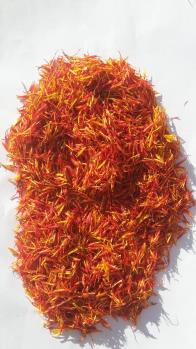Product Description
Physical Characteristics


Carthamus tinctorius is a ANNUAL growing to 1 m (3ft 3in) by 0.4 m (1ft 4in). It is in leaf from May to October, in flower from August to October, and the seeds ripen from September to October. The species is hermaphrodite (has both male and female organs) and is pollinated by Insects. The plant is self-fertile.
Suitable for: light (sandy) and medium (loamy) soils, prefers well-drained soil and can grow in nutritionally poor soil. Suitable pH: acid, neutral and basic (alkaline) soils and can grow in very alkaline soils.
It cannot grow in the shade. It prefers dry or moist soil and can tolerate drought.
Edible Uses
An edible oil is obtained from the seed. It contains a higher percentage of essential unsaturated fatty acids and a lower percentage of saturated fatty acids than other edible vegetable seed oils[269]. The oil, light coloured and easily clarified, is used in salad dressings, cooking oils and margarines[2, 4, 7, 34, 46, 183, 244, 269]. A very stable oil, it is said to be healthier than many other edible oils and its addition to the diet helps to reduce blood-cholesterol levels[238]. Seed – cooked. They can be roasted, or fried and eaten in chutneys[61, 105, 183, 269]. Tender young leaves and shoots – cooked or raw[105, 171, 177]. A sweet flavour, they can be used as a spinach[179, 183]. A famine food, it is only used when all else fails[178]. An edible yellow and a red dye are obtained from the flowers[244]. The yellow is used as a saffron substitute to flavour and colour food[183, 244]. The (fried?) seeds are used as a curdling agent for plant milks etc[183].
